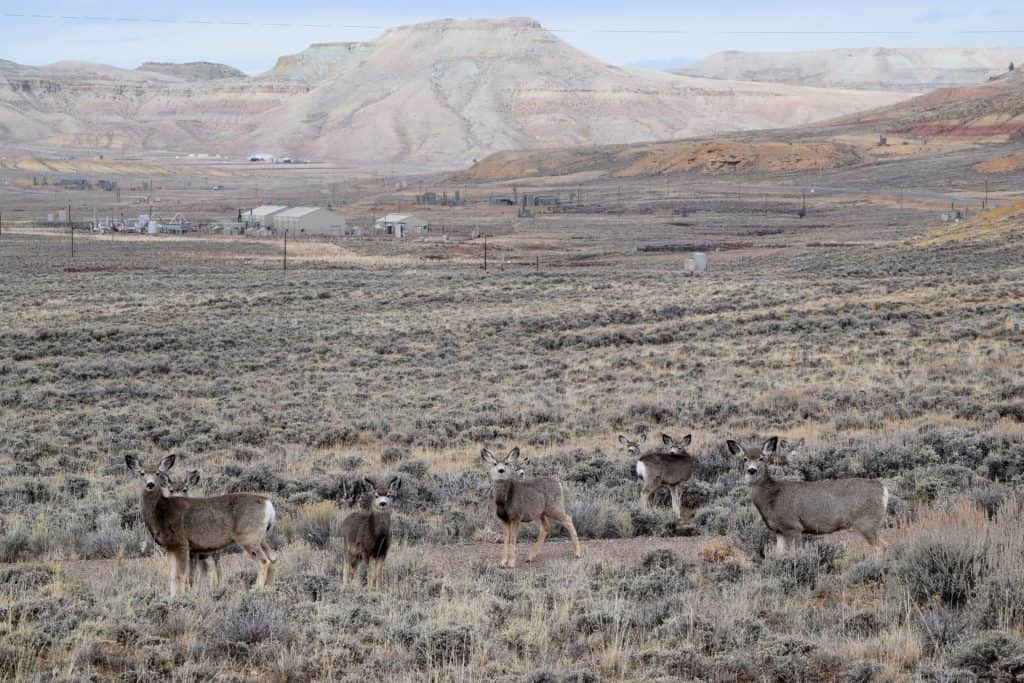Science Committee Update and Ramblings
By Dan Thompson, Science Committee Chair
Changes in Latitudes/Changes in Attitudes and How Migration is Linked to Jimmy Buffet
That MAY be a stretch, but as we learn more about our wildlife’s population demographics and the linkages between habitat use, migration, and long-term perpetuity of wildlife populations on the landscape we realize the importance of these intricacies and their connectivity. The interrelatedness of all things is wholly recognized by all of us in the field, but still attempting to be fully understood. Perhaps that’s the beauty of the wildlife profession, likely nothing will ever be fully understood. Some could say that is a cop out or a way of maintaining career longevity, but it is also being true to the integrity of science and our realization of our own insignificancies…Before I digress further let’s bring the herd back to our pre-described migration route discussion. The role of Wyoming Chapter of The Wildlife Society (WY-TWS) and the Science Committee are notable and long-standing in regards to wildlife migration and definitions of migration corridors/routes/habitats. In the 1980s, the WY-TWS developed season range definitions for Wyoming ungulates, which fostered collaboration and communication in regards to our understanding of migrational habitats, with further alterations as to the definition of migration routes from WY-TWS in 2006. With the advent of GPS technology and further research into long-range migration and movements of ungulates, the Science Committee was formally approached by the Director of the Wyoming Game and Fish Department (WGFD), Scott Talbott, to “use the available peer-reviewed literature and other sources appropriate to the tasks to update the definition of Migration Routes used in Wyoming.” This allowed the Science Committee to call upon our membership and diversity of expertise and experience to provide guidance to the Wyoming Game and Fish Department:
“…you will find a stepwise definition process related to migration routes and other essential definitions in order to clarify the use of these terms, including: delineated ungulate migration route, delineated ungulate migration corridor, population, sample population, documented ungulate migration routes, and recognized ungulate migration routes. These terms and definitions will allow Departmental personnel to identify and designate migration routes based on available data when dealing with agency partners. We are fortunate to have some of the leaders in the field of migration studies and delineation right here in Wyoming and as members of the Wyoming Chapter of The Wildlife Society; inclusion of their expertise assisted with developing relevant and concise definitions based on your request” (Defining Ungulate Migration Routes, letter submitted to WGFD June 2014).
The information provided served as a foundation for further delineation and discussions regarding the importance of migration and maintaining functional migration routes/corridors to facilitate long-term viability of Wyoming’s ungulate populations. These issues have been brought to the forefront of the state and nation in recent months and years as it relates to development and possible incursions on critical migration routes. Most recently the WY-TWS Board again acknowledged further support for designation of migration corridors for Sublette pronghorn (Antilocapra americana) and Wyoming Range mule deer (Odocoileus hemionus) in a letter to the current Director of the Wyoming Game and Fish, Brian Nesvik. One could argue the beauty of letters of support and general acknowledgement of the importance of the issues at hand is that we have been in the trenches since the beginning, routed in science and data, and in support of Wyoming’s wildlife and wildlife habitats for as long as this orb rotates on an axis.

©Samantha Dwinnell
 Dan Thompson is the Large Carnivore Section Supervisor for the Wyoming Game and Fish Department, where he oversees the State’s mountain lion, wolf, and grizzly and black bear management and research.
Dan Thompson is the Large Carnivore Section Supervisor for the Wyoming Game and Fish Department, where he oversees the State’s mountain lion, wolf, and grizzly and black bear management and research.


